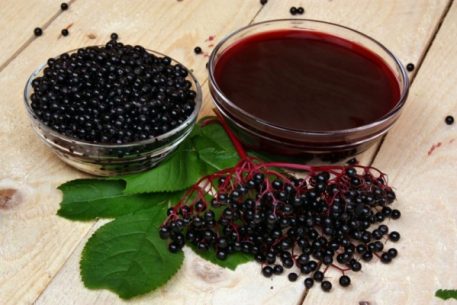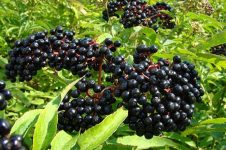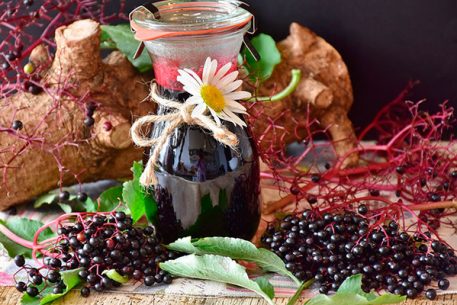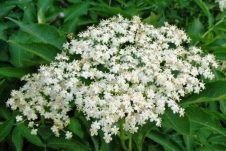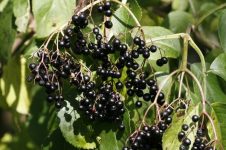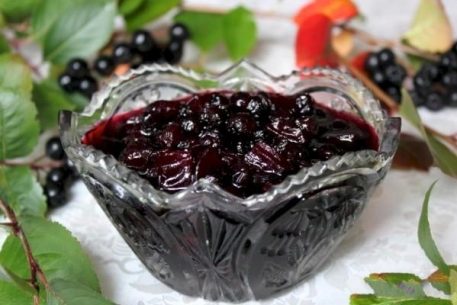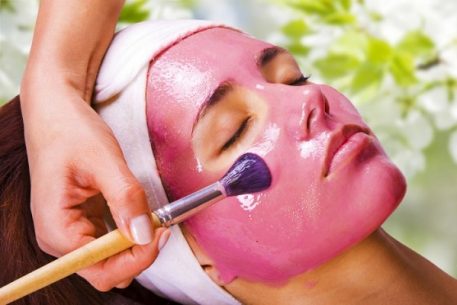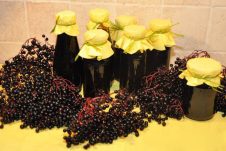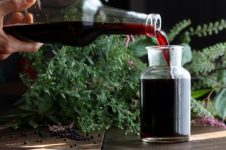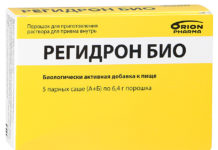In spring, fragrant white inflorescences blossom on the young branches of the shrub. Closer to autumn, fruits are poured with juice. But the medicinal properties of black elderberry are especially appreciated, which are used for colds, joint diseases, digestive problems and overweight.
Material Content:
Description and chemical composition
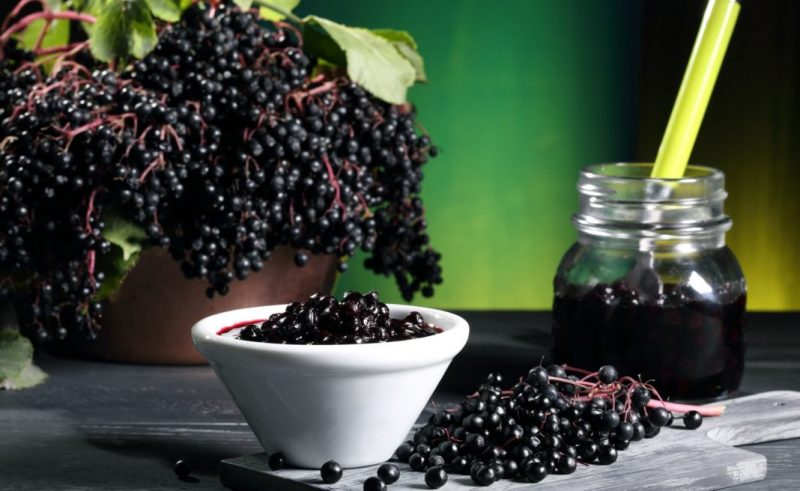
The Latin name for the species Sambukus nigra comes from the Greek word "sambuke". So in ancient times they called red paint obtained from the fruits of black elderberry. The plant prefers moist soil, looks like a powerful shrub or like a medium-tall tree.
Description of black elderberry:
- Mature branches of the shrub have ash-brown bark, young shoots are covered with green skin.
- Complex pinnate leaves consist of 5 to 7 large oval leaf blades with a pointed apex and small denticles along the edge.
- Large corymbose inflorescences bloom in May and exude a bittersweet aroma.
- The fruits have a shiny black skin, dark red juice and from two to four small seeds inside.
Flowers contain glycosides, essential oil with terpenes, vitamins. Berries are rich in anthocyanins and ascorbic acid. Also found are carotene, amino acids, mucus, tannins, and trace elements.
From May to June, elderberry flowers are harvested, freeing them from coarse petioles and spreading them for drying in the shade. Ready-made raw materials in the form of yellowish-white petals have a faint almond smell.Young leaves are cut in the spring, and the bark in the summer. Tannin-rich leaves can be added to salads. Black elderberry berries are harvested from the end of August, and after harvesting, they are dried, frozen or processed to produce juice.
Blossoming elderberry is a natural insecticide that repels flies and mosquitoes with its smell.
It should be noted that there are other types of elderberries that are not related to medicinal plants.
- The stalks of elderberry grassy green leaves resemble parsley. All parts of this plant are poisonous.
- The elderberry fruits of the cyst have a red skin and contain toxic components.
Black elderberry: edible berry or not?
Ripe black-purple fruits have a sweet and sour taste. Berries can be eaten, make jam and jam from them. After drying or freezing, the fruits are used in the winter as a source of vitamins for making tea and kissel. Juice is a tasty and healthy drink. It is used internally, used for tinting wines, liquors and liquors, and culinary products.
Therapeutic and beneficial properties

Different parts of black elderberry have a therapeutic effect. Higher content of medicinal compounds in its flowers and fruits. It is believed that these natural remedies activate the immune system, stimulate blood circulation, and can help cure cancer.
Medicinal properties:
- antiseptic (moderate);
- anti-inflammatory;
- choleretic (weak);
- vasodilator;
- antimicrobial;
- expectorant;
- sweatshops;
- sedatives;
- astringents.
Ascorbic acid and anthocyanins in fruits are antioxidants that protect cell membranes from destruction by free radicals.
A variety of useful properties of elderberries are in demand in the fight against extra pounds and premature aging. Fruits with moderate diuretic and laxative effects are especially valued. Ripe berries and juice from them, when taken orally, have a positive effect on metabolism, improve gastrointestinal motility, and eliminate toxins and edema.
People's advice:spinach
In the treatment of which diseases does the plant help
Most often, elderberry flowers are used in the treatment of inflammation of the respiratory tract. Infusion can be taken orally with acute respiratory viral infections, sinusitis and other common infectious diseases. The tool stimulates the coughing up sputum and enhances sweating, which helps lower body temperature.
- The active components of the flowers have a mild antispasmodic and diuretic effect. Infusion is used for cramping in the abdomen, edema of cardiac origin.
- Also, this anti-inflammatory agent helps with rheumatism, gouty pain, arthritis.
- The bark is boiled and this solution is used for local baths of compresses and lotions on the affected areas with diseases of the joints and skin. Enhances the anti-inflammatory and analgesic effect by adding an infusion of elderberry flowers and a decoction of chamomile baskets.
- Applying steamed elderberry leaves helps to heal burns, reduce inflammation in the area of the boil, hemorrhoidal nodes.
Health Recipes
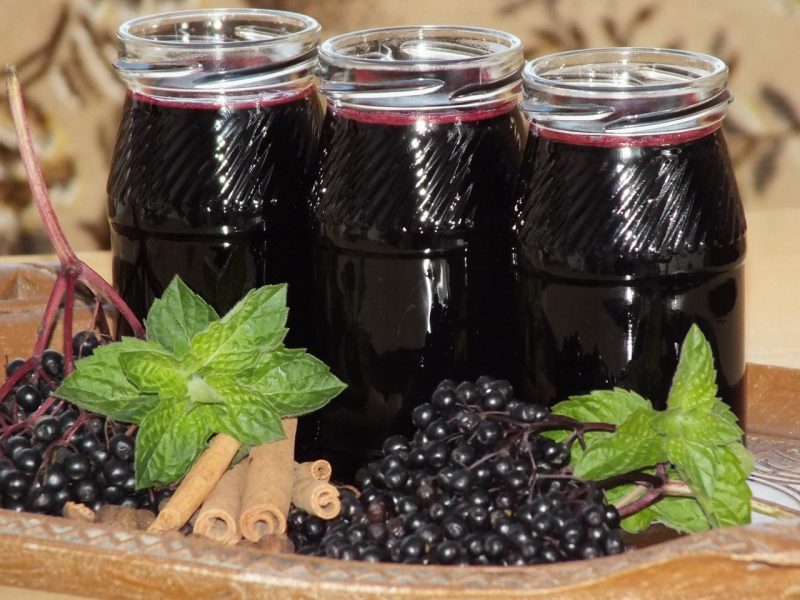
The classic method of insisting elderberry flowers is scalding 1 tbsp. l raw materials with hot water of 250 ml. Then leave the infusion for 5 minutes, and after filtering, sweeten with honey (if desired).
It is recommended to use the infusion daily after each meal in case of colds. The volume of drinkable solution can be increased to 6 cups.
Recipe for the treatment of joint diseases:
- Brew 1 tbsp. l elderberry flowers 250 ml of water.
- Boil over low heat for three minutes.
- Cool and filter the solution.
- Take 50 - 70 ml of broth before each meal.
Means for treating constipation.
Recipe 1:
- Get juice from 20 g of elderberry in any available way.
- Add 1 tbsp. l honey.
- Accepted in the morning for 15 - 30 minutes before breakfast.
First, the dose is 1 tbsp. l facilities. With good tolerance, you can drink 50 - 100 ml of juice with honey.
Recipe 2:
- Take 10 g of elderberry (fresh or dried), 250 ml of boiling water.
- Brewed, heated on low heat for 10 minutes.
- Insist remedy for about an hour, filter.
- Use daily ½ cups of broth.
Recipe for brewing elderberry bark:
- Scalp 5 g of dried bark with a glass of boiling water.
- Next 5 hours insist in a thermos.
- Filter the solution thoroughly.
- Take 100 ml of the drug.
Elderberry is included in herbal preparations for the treatment of neuralgia, prostatitis, gynecological diseases. Tansy, oregano, mint, coltsfoot, pine buds, valerian root are added to the mixture. These plants complement the healing effect of each other.
How to use?
Water infusions and elderberry decoctions can be consumed inside, used for local procedures. Such funds are prepared according to recipes of traditional medicine and herbal medicine, be sure to comply with the recommended proportions and dosages.
Elderberry flowers and fruits are safe when used correctly, but it is recommended that you consult a doctor before starting it.
- Chronic constipation is treated with juice and jelly made from fresh, frozen or dried berries. Before using the product, it is advisable to add honey to it.
- Decoctions of flowers are used for inhalation and instillation into the nose with a runny nose, sinusitis.
- They use water extracts to rinse with sore throat, infections of the oral cavity.
Use in cosmetology
Juice and infusion of flowers is used for irritation and inflammation of the skin, acne, dark circles under the eyes. Means are used for lotions on the affected area, as well as a lotion for the face. Elderberry infusion can be washed daily to restore healthy skin color, lighten age spots, and rejuvenate.
You can prepare a solution according to a standard recipe. Take 2 - 3 tbsp. l fragrant flowers, pour raw materials into a 500 ml thermos, add boiling water. Insist for 20 minutes, filter after cooling.
People's advice:pomelo fruit
Precautionary measures
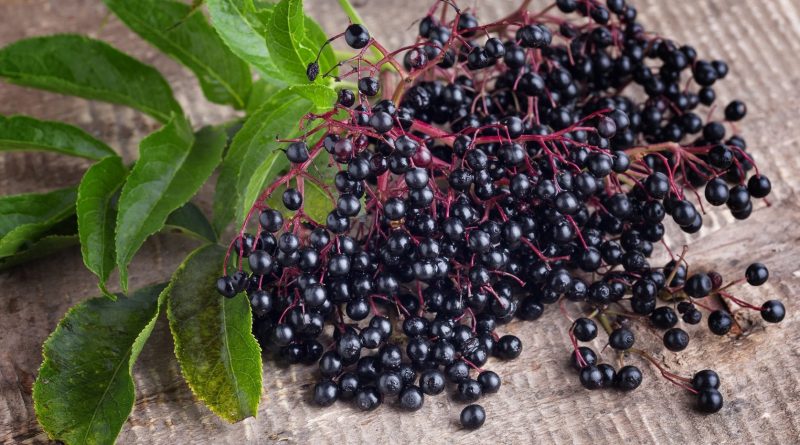
Leaves, branches, fruits of the plant in question contain glycosides. In medicine, these substances are used with caution due to possible toxic effects. If you eat a lot of berries or drink more than a glass of elderberry juice, you may experience indigestion and / or diarrhea.
It is not recommended to constantly drink juice, infusion or elderberry broth. It is enough to take the chosen remedy for 10 days, then you should take a 5-day break.
Contraindications
Contraindications for ingestion of berries, juice, infusion and a decoction of any parts of black elderberry:
- pregnancy;
- renal failure.
Any drugs can have side effects such as nausea, vomiting, burns of the esophagus, heartburn, Quincke's edema, or anaphylactic shock. If an unusual reaction of the body to a herbal remedy appears, you must stop using it and consult a doctor.


